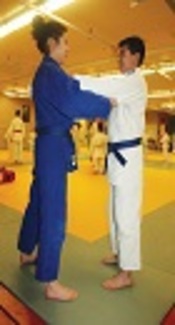Reliability and Validity of a New Fitness Intermittent Judo Test
Keywords:
Fitness Testing, Reliability, Validity, Uchi-komi, Judo AthletesAbstract
Objectives: The aim of this study was to assess the validity and the reliability of a new fitness intermittent judo test using the basic movement patterns of judo. Methods: Forty-one national level judo male athletes participated in this study. Eighteen judokas performed the intermittent judo fitness test consisting of 10 × 30 s maximal interspersed with 15 second rest, the Australian shuttle test, the special judo fitness test and a judo fight. Twenty three judokas performed twice the intermittent judo fitness test on different days. Results: The results showed significant correlations between the biggest number of Uchi-komi during the intermittent judo fitness test (Uchi-komibest), the longest distance covered during Australian shuttle test and the total projection in the special judo fitness test (P < 0.01). Likewise, a significant relationship was demonstrated between the total Uchi-komi performed in the new judo test (Uchi-komiTot) and both the total distance covered during Australian test and the total projection during the special judo fitness test (P < 0.01). In addition, a significant correlation of the rating of perceived exertion was observed between the intermittent judo fitness test and judo fight (P < 0.05). The intra-class correlation coefficient analysis revealed relatively strong test-retest reliability for Uchi-komibest and Uchi-komiTot (> 0.90). The smallest worthwhile change showed that a change of 2 and 4 Uchi-komi in Uchi-komibest and Uchi-komiTot respectively is occurred. Conclusions: The new fitness intermittent judo test is both valid and reliable measurement tool to assess judokas’ fitness at the basic judo movement patterns.
Downloads








